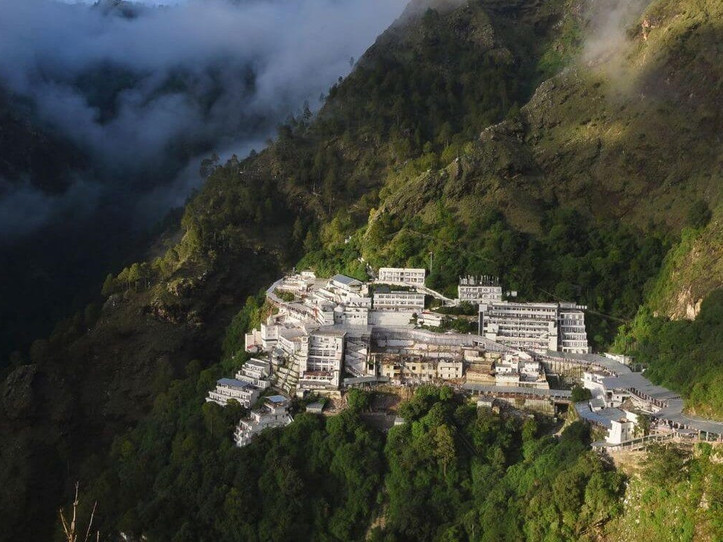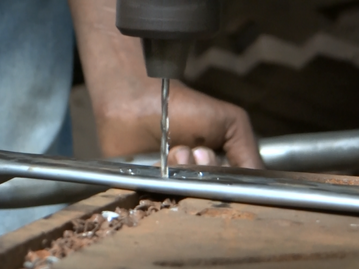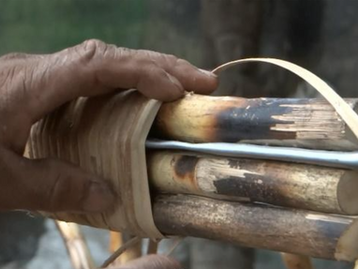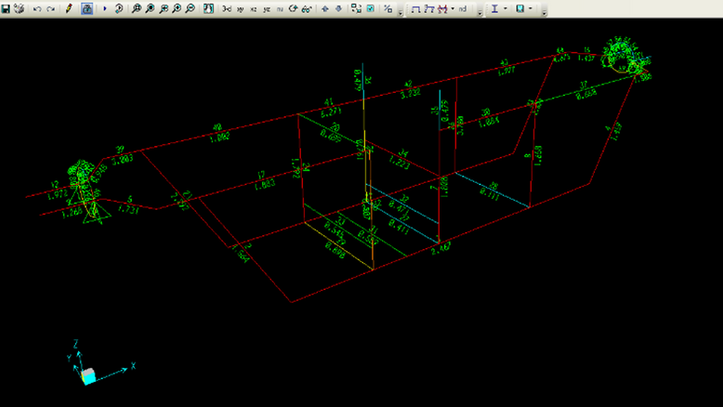Cane Palkhi
Shenoy Studio, IDC School of Design IIT Bombay | 2017
PROJECT OVERVIEW
To reduce the load on pilgrim porters, the Industrial Design Centre at IIT Bombay designed and fabricated a lightweight, ergonomic and durable palki made of stainless steel weighing just 34 kilos, reducing the load by over 6 kilos individually. My summer internship focused on the properties of cane for design, the fabrication of a cane palki, and how it could be viable alternative to the steel version as a lightweight, eco-friendly and durable palanquin made with local craftsmen.
TEAM AND ROLE
- Aniket Bhagat (Lead Designer)
- Arvind Bhallamudi (Design Intern)
- Kishore Chavan (Technical Staff)
- B.K. Chakravarthy (Guide)
AREAS OF FOCUS
- Industrial Design
- Mechanical Engineering
- Co-Creative Design
- Local Arts and Crafts
- Testing and Analysis

CONTEXT
The Vaishno Devi Pilgrimage
The pilgrimage to the Vaishno Devi shrine in Jammu & Kashmir is considered holy. The main idol of the goddess resides in a cave temple located in the folds of the three-peaked mountain called Trikuta. The temple is situated at an altitude of 1585 m (5200 ft.). It is one of the most popular destinations of Hindu devotees, attracting over 10 million 'Yatris' every year. They undertake a steep trek of over 12 km from the base camp at Katra. This is highly strenuous, more so for the elderly and the disabled. Hence, many pilgrims prefer to be carried up in palki (palanquin).
Each palki is carried by a team of four highly skilled and co-ordinated porters over the entire stretch. Carrying pilgrims on the palki is the main source of income for the local porters even though it can have serious effects of their physical health. A customer weighing 100 kilos along with the additional palki weight of 60 kilos; which is currently in use; distributes over 40 kilos individually on a porter, which mainly concentrates on their shoulders and lower back, for many hours every day.
EXISTING WORK
A Lighter Stainless-Steel Palkhi
To reduce the load on the porters, the Industrial Design Centre at IIT Bombay designed and fabricated a lightweight, ergonomic and durable palki made of stainless steel weighing just 34 kilos, reducing the load by over 6 kilos individually. As an alternative material ‘cane’ or ‘rattan’ can be used. Along with weight and cost reduction, using this material also provides income for local cane craftsmen. My project explores the properties of cane, the fabrication of a cane palki, and how it could be a tangible alternative to the steel version.
MATERIAL SELECTION
Rattan as an Even Lighter Alternative
Rattan (popularly called ‘cane’) is a climbing plant, which grows abundantly in the tropical regions. There are 13 genera of cane divided into 700 species which are predominant around southeast Asia. It is the fastest growing tropical wood, typically taking around 5-7 years to restore its growth before it is ready to be harvested again, which makes it a great naturally sustainable option.
Cane is strong, durable, flexible and light-weight, making it an excellent choice of material for a wide range of applications. The density of cane varies between 0.27 to 0.65 g/cm3 depending on the species. Cane has excellent strength-to-weight ratios and it's mechanical properties improve with increase in density. It also gives an aesthetic, raw and natural look to products.
CONCEPTUALIZATION
Sketching with Material Considerations
The concept sketches shown below were made for a full-cane palki. Since the front and back sections were later attached with a steel part, changes were made accordingly during the fabrication. Since cane does not possess high rigidity such as that of steel, major cane members needed to be doubled vertically for compensation.
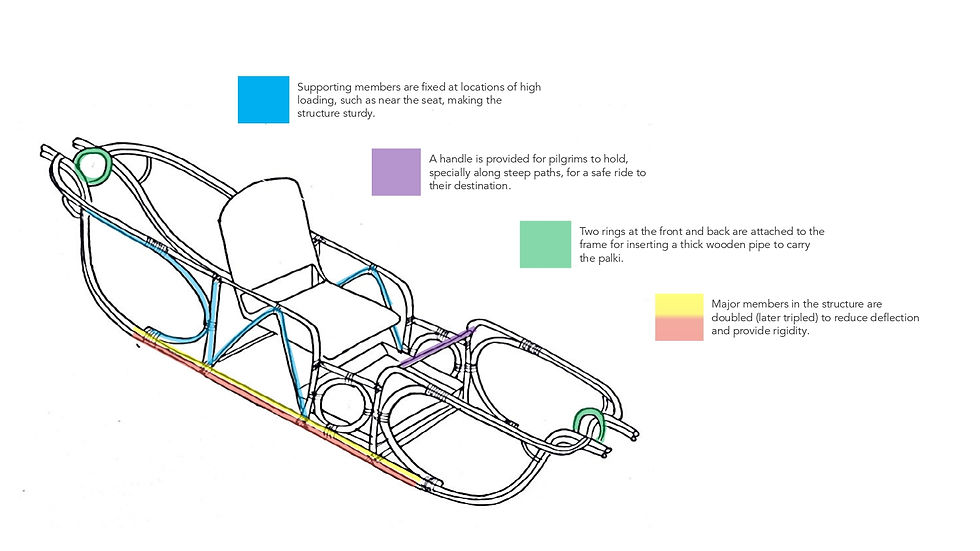
NATIVE PROCESS
Working with Local Cane Craftsmen
First, all the long canes were prepared for the palki by heating and straightening out all the small naturally occurring misalignments. Then they were cut according to the given dimensions with a hack saw and bent into required shapes for the basic frame. The chair was constructed separately and attached to the frame.
PRODUCT DEVELOPMENT
Integrating the Cane Design with Stainless Steel Sections
The load was found to concentrate at the joints near the ring (at the front and back) through which a thick wooden pipe goes through to carry the palki. Instead of making the palki entirely out of cane, this section was cut out from an earlier trial stainless-steel version and attached to the cane frame.
SIMULATIONS
Collaborating with Engineers for a Finite Element Analysis
The finite element analysis was carried based on the load of an average passenger, the reaction forces from carrying it, and using material properties of stainless steel (SS304) and entering custom properties of cane. This validated stress, strain and deflection values of the cane palkhi, rendering it a feasible solution.
OUTCOMES
A Viable Palkhi Made with Indigenous Materials, Sustainable Processes and Artisanal Techniques
The cane palki was found to weigh 20 kilos compared to 34 kilos for the stainless-steel version (original mild steel at 60 kg). The cane palki is 67% lighter than the original one used by the porters, and 41% lighter than the stainless-steel version. The individual load on porters (for a pilgrim weighing 100 kg) is reduced to 30 kg. The frame is slightly flexible, yet rigid enough for practical use. It is also more environmental-friendly, and can be manufactured locally, contributing to skill development and job creation. The reduction in weight (coupled with new designs), can reduce the number of porters to say, three instead of four, and increasing their income. The tools used in fabrication lend themselves to improvement in terms of ease of use and better output.
ENGAGEMENT STRATEGY
Multimedia and Communications Plan
Balancing creative writing with technical information was done in parallel with the assisting the design team with layouts, visual graphics, imagery and interactions. The communications strategy and website were refined, tested and launched in June 2024.





